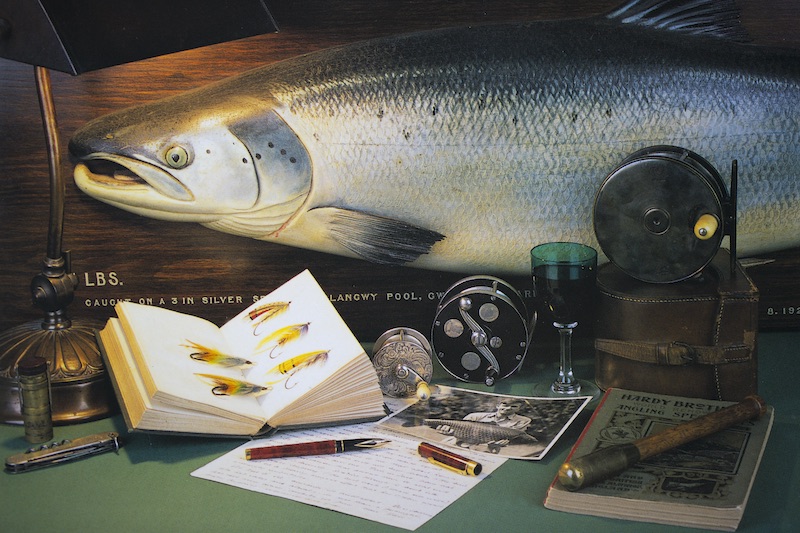
Some of the most attractive and interesting examples of fish taxidermy include mounted and cased fish as well as fish carvings designed to preserve the memories of trophy catches. Long before the days of outdoor photography, this form of artistry drew an impressive number of patrons eager to enshrine their angling exploits for all time.
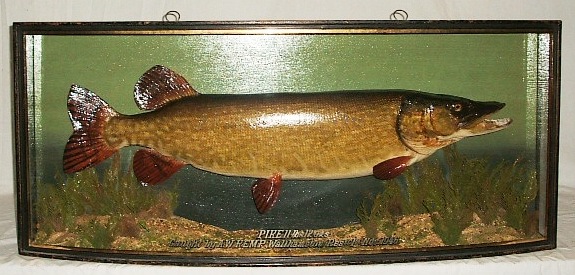
Cased fish is a quintessentially British form of taxidermy, with famous companies like John Cooper and Sons, Rowland Ward, Peter Spicer, W. Barnes, and Williams of Dublin. Fish were preserved and mounted in bowed glass cases, which made them appear to float in the water.
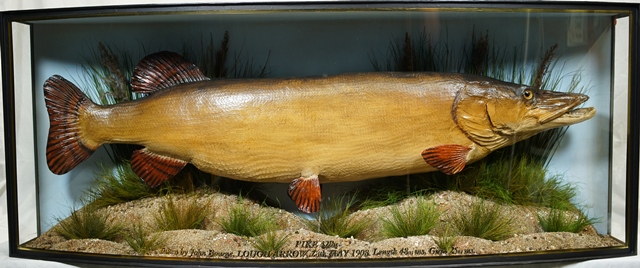
The name of the angler, the river and the date and size of the catch were often recorded in elaborately scripted labels on gold leaf adorned cases. John Cooper and Sons was the premier taxidermy company for these cases, founded in 1830 and trading for over 120 years.
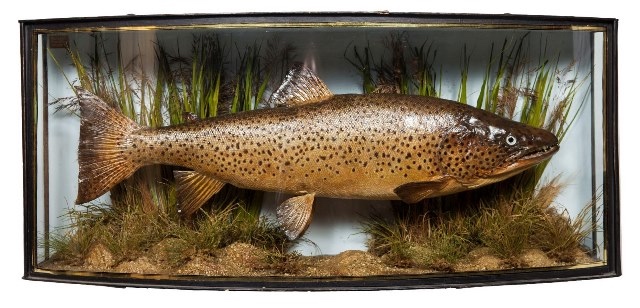
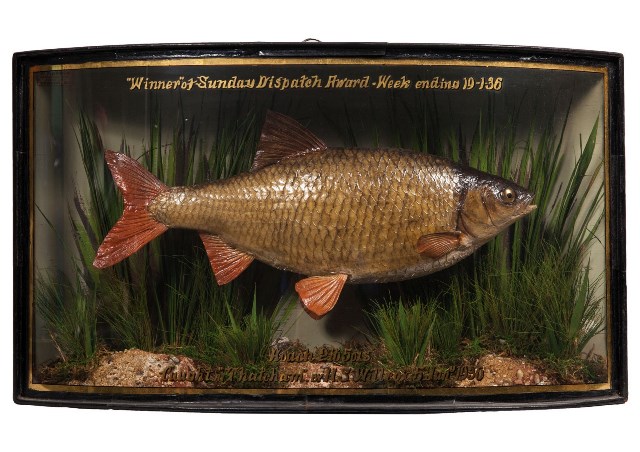
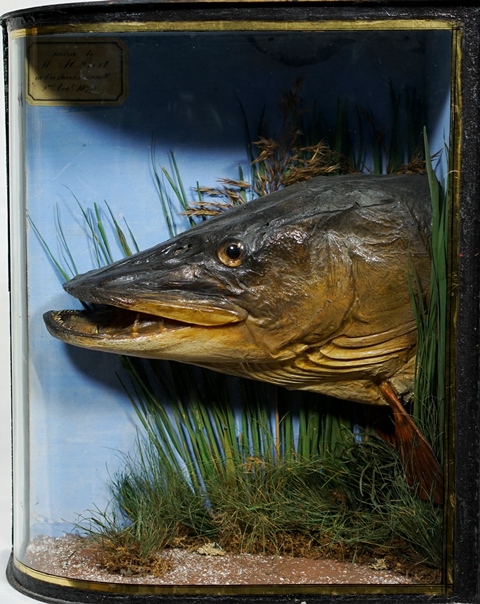
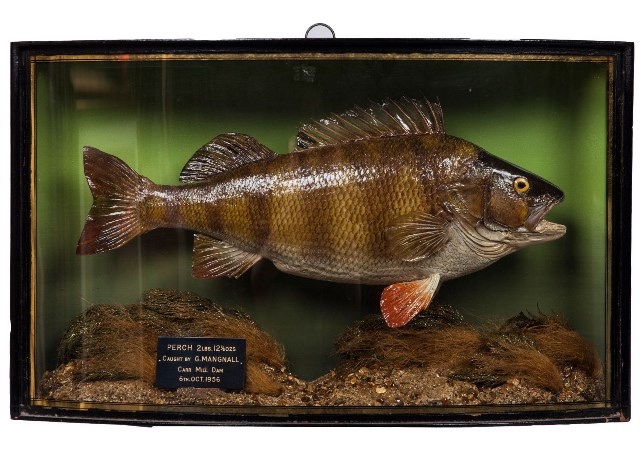
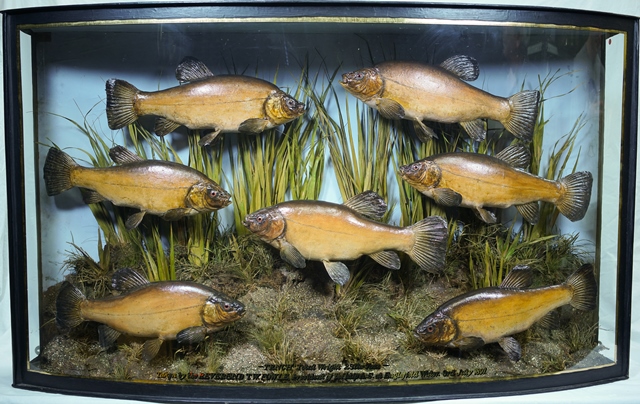
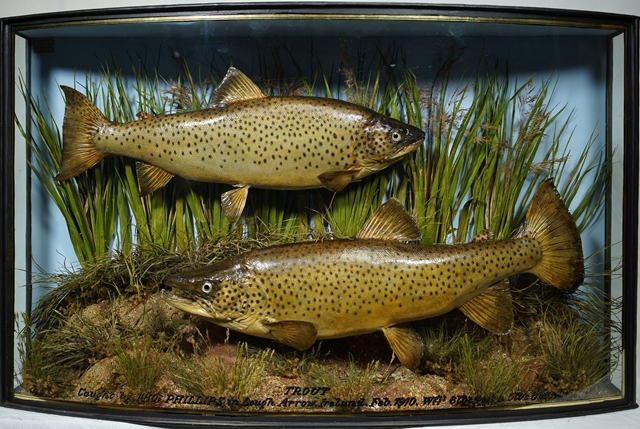
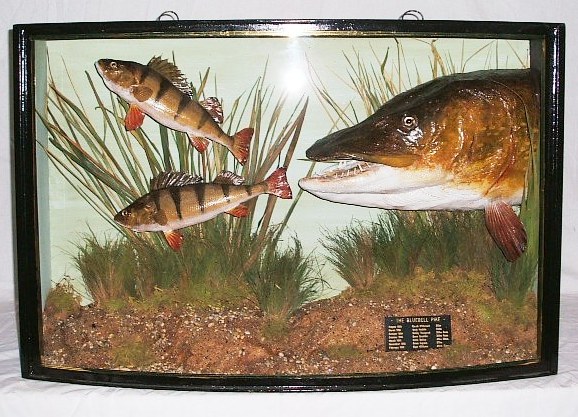
The British cased fish included sport and course fish of great variety including trout, salmon, grayling, pike, bream, perch, tench, and rudd. These cases are still wonderfully preserved in many country houses and pubs in the U.K.
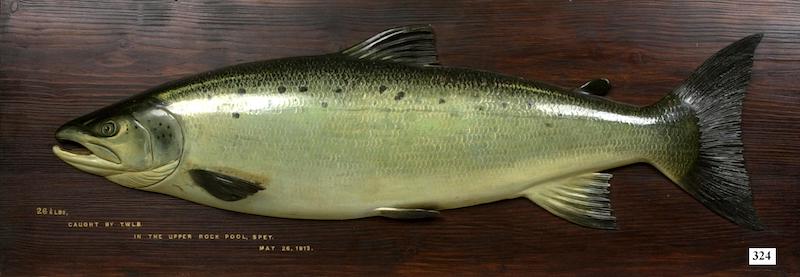
Models of Atlantic salmon have also been carved with great skill and craftsmanship since the late 1800s to record historic catches, often mounted on large oak plaques for hanging. Salmon carvings were commissioned by anglers from the famous studio of the Tullys in Fochabers, Scotland, on the East bank of the River Spey.
John Tully learned his trade by apprenticing for the master fish carver John B. Russell in the mid-1800s, one of the founding fathers of trophy fish carving. Tully married Russell’s daughter, Isabella “Dhuie” and Dhuie painted nearly all of her husband John’s carvings. John, the carver, and Dhuie, the painter, were some of the best artists to ever worked in the carved and painted wood medium.
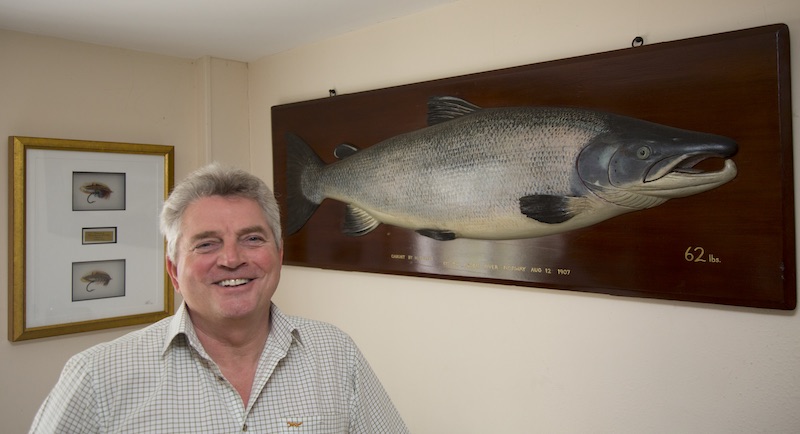
Neil Freeman of Angling Auctions, Ltd. rescued and restored this classic Atlantic salmon carving of a 62 lb. fish caught in Norway. The carving had been spared from the demolition site of a British pub. After receiving a blurry Faxed photo of the fish, Freeman drove to retrieve it and ultimately researched the historic catch which had been recorded officially in 1907.
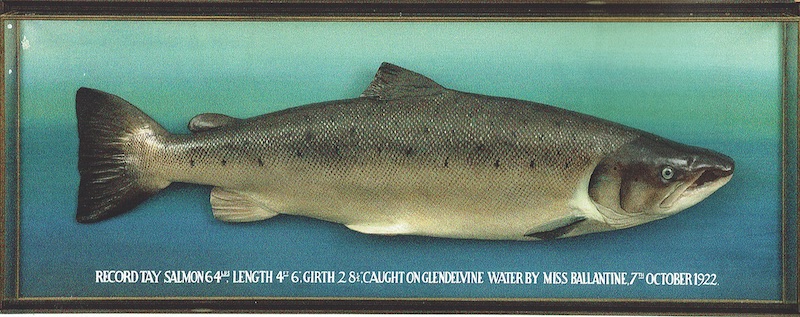
The U.K. record 64 lb. salmon landed by Miss Georgina Ballantine on the River Tay in 1922 was also memorialized in a cased mount.
In the U.S., there are still a number of great artists carving Atlantic salmon and other fish today, including Stephen R. Smith, whose work has been exhibited at the American Museum of Fly Fishing in Manchester, Vermont, and Gene Bahr of Maine and others.
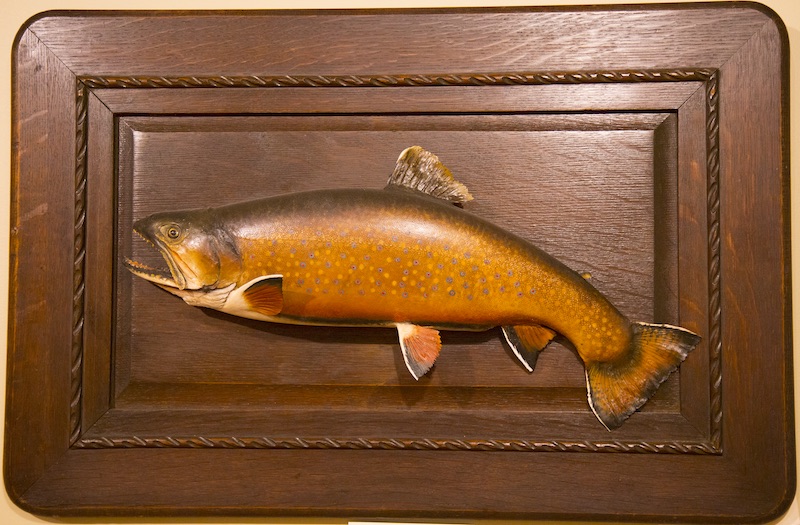
One of the premier taxidermists in America was Herb Welch of Maine. Herb was a consummate artist and outdoorsman who perfected stunning presentations of large Maine brook trout and other trophy fish.
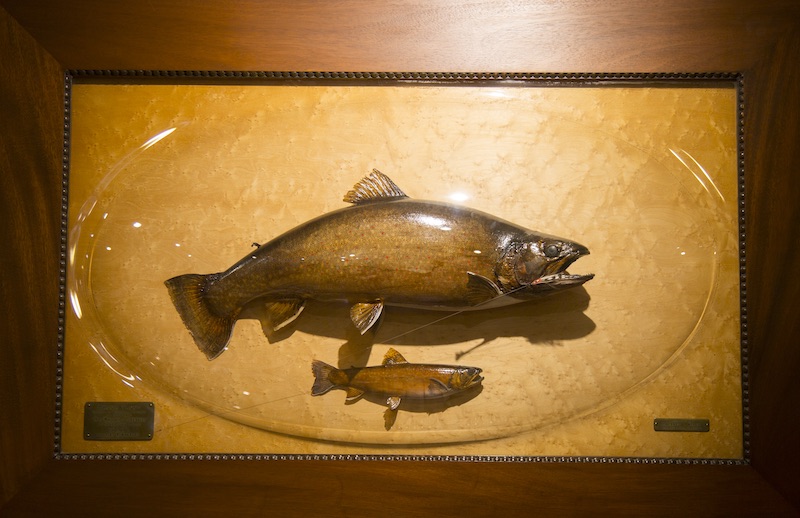
Graydon and Leslie Hilyard’s excellent book “Herbert L. Welch: Black Ghosts and Art in a Maine Guide’s Wilderness” published in 2018, provides a lively account of Welch’s sporting activities, championship casting, and guiding in the Rangeley Lakes Region.
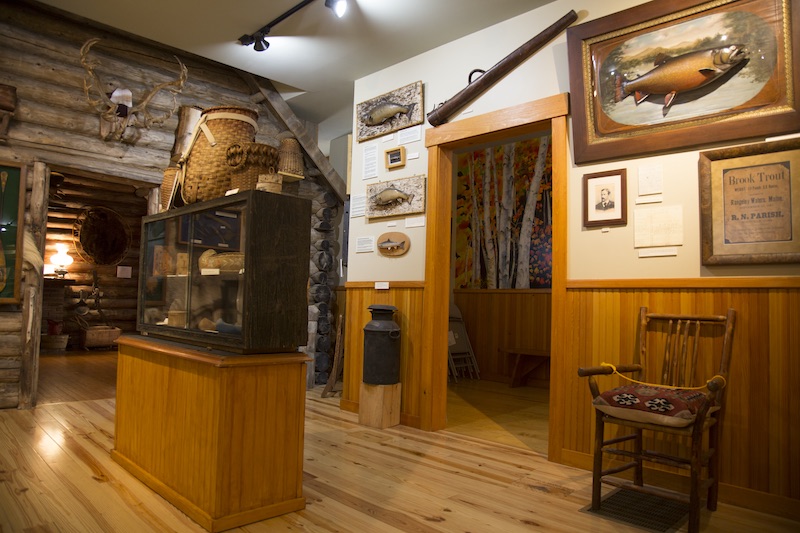
Instead of an absolutely accurate photographic depiction of that great trophy fish, why not an even larger-than-life piece of art to hang on the wall for all to see?
Steve Woit is the author of “Fly Fishing Treasures: The World of Fly Fishers and Collecting”, a book featuring profiles of 30 experts and collectors and over 800 photographs of rare and collectible fly rods, reels, flies, books, and ephemera.






As I sit writing this on the western edge of London (England), there is a fine, bow-fronted Cooper case on a shelf just a standard 9ft. 5-weight flyrod length away from my right shoulder.
The gold letters on the glass read read:
Bream [centred / centered at bottom]
And below it in a single line of script:
Caught by Harry Barnett at Uxbridge Point in the River Colne, August 21st 1906
I have known the spot (or spots, there two candidates for “Uxbridge Point” actually, at different ends of an edge-of-town river island) for virtually all of my life. Never fished them for bream (bit of a slimey Yuk Fish, bream), but have with sometimes great success for barbel, chub, roach and dace – “our” British largely non-trouty lowland rivers’ Coarse Fish.
How did the case come into my possession? For my 18th birthday my Mum and Dad were looking to give their totally lost to fish and fishing son a really nice “fishy” present. A local fishing tackle dealer, a famous British barbel-angler named Jack Harrigan, a man I had known and had asked many questions of since I was in shorts, suggested that a cased fish by the great taxidermists Cooper would be a nice gift and that he would be prepared to sell Dad one from his own very fine, roach and big barbel etc, excellent collection.
Bream it may be, but it’s still with me now.